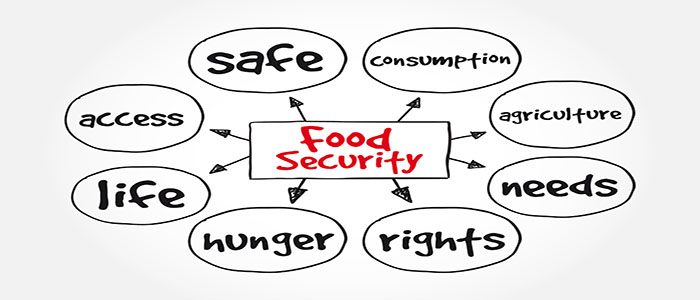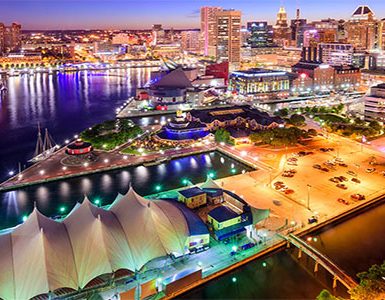For most Americans, it’s difficult to imagine going to bed hungry every night, not being sure where the next meal will come from (or when), and struggling to bring home enough nutritious food to feed the family. Yet this is exactly the stressful situation faced by an estimated 40 million Americans every year.
Food insecurity—defined by the U.S. Department of Agriculture as inconsistent access to a sufficient amount of food for all household members to maintain healthy active lives—affects 15 million households across the nation. The impact of food insecurity can be long-lasting, intergenerational, and in many ways life-threatening.
Food insecurity often occurs in a very specific geographical and socioeconomic context, known collectively as food deserts. There are several here in Washington, D.C., and, as one might imagine, they disproportionately affect some of the District’s most vulnerable community members.
What is a Food Desert?
According to the U.S. Centers for Disease Control and Prevention (CDC), a “food desert” is a geographical area that has “relatively poor access to healthy and affordable food.” Originating in Scotland in the 1990s, the phrase in its simplest sense describes a “literal absence of retail food in a defined area.”
However, it’s also necessary to expand the definition of food deserts so it includes the effect of socioeconomic disparities, rather than just the presence or absence of affordable healthy food. To this end, the D.C. Policy Center suggests three interrelated factors which more accurately define food deserts within Washington D.C. Adapted from research from Johns Hopkins University, these three defining factors are:
- The nearest grocery store or supermarket is over a half-mile away
- The area has a low rate of car access (with more than 40 percent of households without vehicles)
- The area has a high poverty rate (with the median household income for a family of four being less than 185 percent of the federal poverty level)
By this three-factor definition, food deserts represent approximately 11 percent of the District’s total square mileage. More than half of all D.C. food deserts are located within Ward 8, and just under a third are located in Ward 7. These two wards—comprised of predominantly black and poor neighborhoods—lead the District in both poverty and obesity.
Here’s why this definition matters:
Without access to a car or the ability to afford alternative transportation, a person searching for healthy food for their families must walk to the nearest supermarket and carry their groceries home on foot. This can be prohibitively difficult if the nearest store is over a half-mile away, given the physical demands of such an errand as well as the increased amount of time it would require. Many food deserts are also located in areas with higher crime rates, making a trip to the grocery store potentially unsafe.
Poverty, lack of transportation, and lack of physical proximity to quality food—for D.C. residents confronted by these constraints, getting to the grocery store is often simply not feasible. This leaves them, of course, with a less-than-ideal alternative: relying on local bodegas, gas stations, and fast-food restaurants to feed their families, which are notoriously well-stocked with cheap, calorie-dense, and nutrient-poor options.
The public health impact here cannot be overstated:
People living in food deserts are more likely to be obese and diagnosed with chronic health disease. Many of the nation’s most prevalent and expensive health conditions—including cancer, cardiovascular disease, diabetes, and hypertension—are strongly correlated to poor diet. To further complicate the issue, disadvantaged communities often face increased barriers to healthcare and tend to be the hardest-hit by crises like the global pandemic (school closures, for example, took away the only reliable meal source for many of the District’s poorest children).
All factors considered, it’s clear how food deserts are liable to push our most marginalized individuals even further toward the limits of disparity.
5 Ways to Fight Food Insecurity in Washington D.C.
Addressing the stark differences in food accessibility for advantaged versus disadvantaged communities can have a beneficial impact on the entire District, but will require some complex solutions. The D.C.-based nonprofit Roots for Life, offers several:
- Donate or volunteer to nonprofit organizations that provide wheeled grocery carts to individuals living more than a half-mile away from a grocery store
- Encourage SNAP members to shop at their local markets, which incentivizes markets to offer more nutritious foods that will fulfill program standards
- Make food-insecure areas more attractive to grocery stores and farmers’ markets through targeted collaboration between local government, business leaders, and community members
- Support programs and officials who prioritize year-round access to nutritious meals for the District’s most vulnerable populations, including children and seniors
- Promote widespread educational programs to elevate the perceived value of quality nutrition, encourage healthier food choices, and combat the heavy marketing of unhealthy foods within these communities
To join in the fight against food deserts, contact your local representative or nonprofit.
***
https://www.roots-for-life.org/resources/2018/11/11/food-insecurity-and-its-effects-in-washington-dc
https://www.ers.usda.gov/topics/food-nutrition-assistance/food-security-in-the-us/
https://health.gov/our-work/food-nutrition/2015-2020-dietary-guidelines/guidelines/introduction/nutrition-and-health-are-closely-related/
https://www.cdc.gov/pcd/issues/2009/jul/08_0163.htm
https://www.ncbi.nlm.nih.gov/books/NBK208018/
https://www.healthypeople.gov/2020/topics-objectives/topic/social-determinants-health/interventions-resources/access-to-health
Food access in D.C is deeply connected to poverty and transportation
https://www.dcpolicycenter.org/wp-content/uploads/2018/01/Food-ACCESS-in-DC.pdf
https://www.dosomething.org/us/facts/11-facts-about-hunger-us


















Add comment